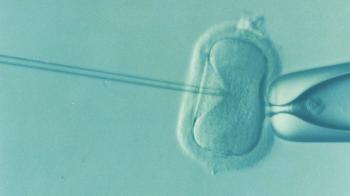Rapidly Increasing Fatty Liver Diseases in Children and Adolescents Developed Non-Invasive Customized Diagnostic Criteria
Aug 06, 2025
|
According to the Korea National Nutrition Health Survey (KNHANES), the prevalence of fatty liver disease among children and adolescents aged 10 to 18 in Korea has risen significantly from 8% to 12% over the past decade. Metabolic dysfunction-associated steatotic liver disease (MASLD)' is a fatty liver disease accompanied by metabolic abnormalities such as obesity and is closely related to type 2 diabetes and cardiovascular disease. Early detection and management are important because it can increase the risk of developing childhood diabetes and various metabolic diseases or lead to adult liver disease in children and adolescents.
However, it is not easy to diagnose fatty liver disease in children and adolescents. Liver biopsy, the most obvious method, is difficult to apply to children due to the nature of invasive tests, ultrasound or MRI is expensive, and there are many limitations in diagnosing metabolic related diseases with only general liver enzyme levels (ALT, AST).
Under these circumstances, a research team led by Chae Hyun-wook, Professor Song Kyung-chul of the Department of Pediatrics at Yonsei University's Gangnam Severance Hospital, and Professor Kwon Yong-jin of Family Medicine at Yongin Severance Hospital have sought out realistic diagnostic criteria that are non-invasive and suitable for children and adolescents. The Fatty River Index (FLI) and the Hepatic Statosis Index (HSI), developed for the diagnosis of adult fatty liver patients, were evaluated to be applicable to the diagnosis of children and adolescents, and an optimized diagnostic reference value (cutoff) for children and adolescents was suggested.
The study was based on data from 1,158 U.S. adolescents between 2017 and 2020 registered in the National Health and Nutrition Examination Survey (NHANES) and 203 pediatric adolescent patients between 2007 and 2023 at Gangnam Severance Hospital and Yongin Severance Hospital. Patients' fatty liver was confirmed through ultrasound and liver scan tests, and based on this, we compared and analyzed how well FSI and HSI predict metabolic abnormal fatty liver disease in children.
As a result of the study, the area under the receiver operating characteristic curves of FLI and HSI were 0.91 and 0.90 in the US National Health and Nutrition Survey data, respectively, and both in Gangnam and Yongin Severance Hospital data were 0.93. Curved is a number that indicates how accurately the disease is identified, and the closer the value is to 1, the better it is to distinguish the presence or absence of the disease. The fact that similar values were found in the clinical sites of Gangnam and Yongin Severance Hospital suggests that it can be applied directly to actual patient treatment.
In addition, in this study, we evaluated how many or more FLI and HSI levels increased the risk of metabolic abnormal fatty liver disease. As a result, if it was less than 20 on the FLI basis, the risk of fatty liver with metabolic abnormalities was low, and if it was more than 50, the risk was high. The risk of HSI was low when it was less than 30, and the likelihood of metabolic abnormal fatty liver disease increased when it was more than 40.
The diagnostic criteria presented to the research team were valid even when the hepatic enzyme level was normal. The research team found that even if only adolescents with normal alanine aminotransferase (ALT) were analyzed separately, the curved area values of FLI and HSI were as high as about 0.89 to 0.91. This means that metabolic fatty liver disease may be hidden even in seemingly healthy children and adolescents, and it can be detected early by using FLI and HSI indicators.
Professor Song Kyung-chul said "FLI and HSI can be easily collected in everyday life. It is expected that it will contribute to the management of metabolic diseases in children and adolescents, which have recently increased rapidly because it can be easily and quickly calculated in primary medical institutions or school health checkups.
Professor Kwon Yong-jin said, `We hope that the results of this study will help prevent fatty liver disease that progresses to adults and reduce various health problems caused by obesity.'
The study was published in the international journal Clinical Gastroenterology and Hepatology (IF:12.0) under the title of 'Optimal cutoffs of Fatty life index and hepatic steatosis index in diagnosing fatty liver disease in children and adolescents'.
|
This article was translated by Naver AI translator.















